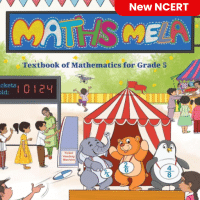Class 5 Exam > Class 5 Questions > The sum of two opposite faces of a Dice is al...
Start Learning for Free
The sum of two opposite faces of a Dice is always _______.
- a)4
- b)5
- c)6
- d)7
Correct answer is option 'D'. Can you explain this answer?
Verified Answer
The sum of two opposite faces of a Dice is always _______.a)4b)5c)6d)7...
The sum of opposite faces of a regular dice is always 7.
View all questions of this test

Most Upvoted Answer
The sum of two opposite faces of a Dice is always _______.a)4b)5c)6d)7...
The sum of two opposite faces of a Dice is always 7.
A standard six-sided dice, also known as a "fair" dice, has numbers 1 to 6 on its faces. The opposite faces of a dice always have a sum of 7. Let's understand why this is the case.
A dice is a three-dimensional object with six faces. When we roll a dice, only one face is visible at a time. The opposite faces of a dice are the ones that are not adjacent to each other, but are on the opposite sides of the dice.
For example, consider a dice with the number 1 on the top face. The opposite face of 1 will be the bottom face, which will have the number 6. Similarly, the opposite faces can be determined for the other numbers as well.
Let's analyze the sum of the opposite faces of a dice:
- Top Face + Bottom Face = 1 + 6 = 7
- Front Face + Back Face = 2 + 5 = 7
- Left Face + Right Face = 3 + 4 = 7
No matter which pair of opposite faces we consider, the sum will always be 7. This is because the numbers on the faces of a standard dice are arranged in a specific pattern, where each pair of opposite faces adds up to 7.
In conclusion, the sum of two opposite faces of a dice is always 7. This is a fundamental property of a standard six-sided dice, and it holds true for any position or orientation of the dice.
Explanation:
A standard six-sided dice, also known as a "fair" dice, has numbers 1 to 6 on its faces. The opposite faces of a dice always have a sum of 7. Let's understand why this is the case.
Opposite Faces:
A dice is a three-dimensional object with six faces. When we roll a dice, only one face is visible at a time. The opposite faces of a dice are the ones that are not adjacent to each other, but are on the opposite sides of the dice.
Example:
For example, consider a dice with the number 1 on the top face. The opposite face of 1 will be the bottom face, which will have the number 6. Similarly, the opposite faces can be determined for the other numbers as well.
Sum of Opposite Faces:
Let's analyze the sum of the opposite faces of a dice:
- Top Face + Bottom Face = 1 + 6 = 7
- Front Face + Back Face = 2 + 5 = 7
- Left Face + Right Face = 3 + 4 = 7
No matter which pair of opposite faces we consider, the sum will always be 7. This is because the numbers on the faces of a standard dice are arranged in a specific pattern, where each pair of opposite faces adds up to 7.
Conclusion:
In conclusion, the sum of two opposite faces of a dice is always 7. This is a fundamental property of a standard six-sided dice, and it holds true for any position or orientation of the dice.

|
Explore Courses for Class 5 exam
|

|
Question Description
The sum of two opposite faces of a Dice is always _______.a)4b)5c)6d)7Correct answer is option 'D'. Can you explain this answer? for Class 5 2025 is part of Class 5 preparation. The Question and answers have been prepared according to the Class 5 exam syllabus. Information about The sum of two opposite faces of a Dice is always _______.a)4b)5c)6d)7Correct answer is option 'D'. Can you explain this answer? covers all topics & solutions for Class 5 2025 Exam. Find important definitions, questions, meanings, examples, exercises and tests below for The sum of two opposite faces of a Dice is always _______.a)4b)5c)6d)7Correct answer is option 'D'. Can you explain this answer?.
The sum of two opposite faces of a Dice is always _______.a)4b)5c)6d)7Correct answer is option 'D'. Can you explain this answer? for Class 5 2025 is part of Class 5 preparation. The Question and answers have been prepared according to the Class 5 exam syllabus. Information about The sum of two opposite faces of a Dice is always _______.a)4b)5c)6d)7Correct answer is option 'D'. Can you explain this answer? covers all topics & solutions for Class 5 2025 Exam. Find important definitions, questions, meanings, examples, exercises and tests below for The sum of two opposite faces of a Dice is always _______.a)4b)5c)6d)7Correct answer is option 'D'. Can you explain this answer?.
Solutions for The sum of two opposite faces of a Dice is always _______.a)4b)5c)6d)7Correct answer is option 'D'. Can you explain this answer? in English & in Hindi are available as part of our courses for Class 5.
Download more important topics, notes, lectures and mock test series for Class 5 Exam by signing up for free.
Here you can find the meaning of The sum of two opposite faces of a Dice is always _______.a)4b)5c)6d)7Correct answer is option 'D'. Can you explain this answer? defined & explained in the simplest way possible. Besides giving the explanation of
The sum of two opposite faces of a Dice is always _______.a)4b)5c)6d)7Correct answer is option 'D'. Can you explain this answer?, a detailed solution for The sum of two opposite faces of a Dice is always _______.a)4b)5c)6d)7Correct answer is option 'D'. Can you explain this answer? has been provided alongside types of The sum of two opposite faces of a Dice is always _______.a)4b)5c)6d)7Correct answer is option 'D'. Can you explain this answer? theory, EduRev gives you an
ample number of questions to practice The sum of two opposite faces of a Dice is always _______.a)4b)5c)6d)7Correct answer is option 'D'. Can you explain this answer? tests, examples and also practice Class 5 tests.

|
Explore Courses for Class 5 exam
|

|
Signup for Free!
Signup to see your scores go up within 7 days! Learn & Practice with 1000+ FREE Notes, Videos & Tests.


















